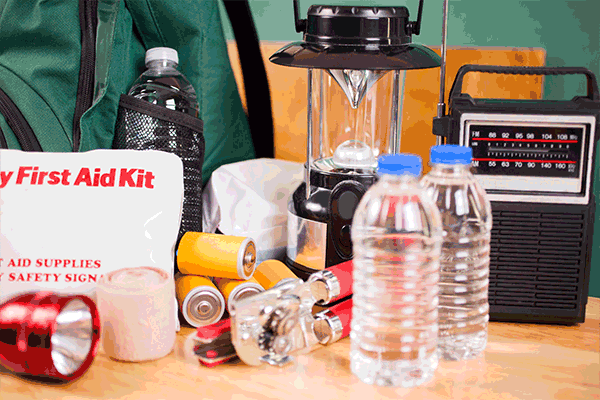How to Better Protect Your Soft-Story Home from Earthquake Damage
California faces a 99% chance of one or more major earthquakes in the next 30 years.* As the LA Times reports, soft-story buildings are particularly vulnerable to damage due to an earthquake.
Our Earthquake Soft-Story retrofit grant program (ESS) can help you protect your single-family soft-story home by providing grants of up to $13,000 for a soft-story seismic retrofit.
This article explains what soft-story homes are, why it’s so important to retrofit them, how the ESS grant program works, and how you can apply for your ESS grant.
What is a Soft-Story Home?
Soft-story homes have garages on the ground floor and one or more floors of living space built over the garage.
According to Earthquake Country Alliance, these homes are at greater risk of earthquake damage because the front wall with the large garage door opening might not be able to bear the weight of the second-story room built above it during an earthquake. In addition, the walls of the garage may be too weak to withstand the side-to-side movements commonly caused by quakes, leading to a collapse or partial collapse. This is exactly what happened in Los Angeles during the1994 Northridge Earthquake, when a soft-story apartment building collapsed, killing 16 people.
Soft-story earthquake retrofits help address this problem by making the home more resistant to side-to-side movement.
What is the California Earthquake Soft-Story Retrofit Grant Program (ESS)?
Just like the Earthquake Brace & Bolt (EBB) grant program, the Earthquake Soft-Story (ESS) retrofit grant program is designed to make it easier for California homeowners to retrofit their single-family homes. This is especially important in earthquake-prone areas of the state that have lots of soft-story buildings, such as in Los Angeles and San Francisco.
The ESS program offers grants of up to $13,000 to eligible homeowners. These funds must be used to help cover the cost of a soft story retrofit for owner-occupied buildings.
Eligibility Requirements for the ESS Grant Program
You should check the ESS grant program’s rules to see if your home qualifies for an ESS grant.
Visit our Program Rules page to view the full ESS program requirements and learn how the program works.
Here’s a summary of the ESS program’s eligibility requirements:
- Only single-family soft-story buildings qualify for ESS grants.
- The home must be located in one of ESS’s designated program ZIP Codes.
- The home must be the participant’s primary residence, and the participant must be the legal owner of record.
- Homes must have been built before 2000 and sit on level ground or a low slope.
- Homes must meet the structural requirements of FEMA P-1100 and be one of four types:
- Type 1—House Over Garage + Ground Floor Finished Living Space
- Type 2—Room Over Garage + Crawl Space Previously Retrofitted
- Type 3—Room Over Garage + Crawl Space Needing Retrofit
- Type 4—House Over Garage + No Ground Floor Finished Living Space
- Homeowners must agree to hire an approved retrofit contractor listed in the ESS Contractor Directory.
Why Should You Participate in the ESS Program? Benefits Beyond Dollars
Soft-story retrofits in California are estimated to cost between $14,000 to $28,000. While the ESS grant program helps offset those costs, there are additional benefits to participating.
First, soft-story retrofits may significantly improve your home’s resistance against earthquake damage. Soft-story retrofits help address the inherent weaknesses of soft-story construction by strengthening your home’s foundation and walls and adding additional structural supports.
Participating in the ESS program can help protect your family, while also providing the peace of mind that comes from knowing that your home is better prepared for tremors.
Finally, the ESS program helps improve community resilience by strengthening individual houses. Your participation in the ESS program helps create a more earthquake-resistant California.
Take Action: How to Apply for an ESS Grant
If your house qualifies for an ESS grant, you should act immediately to help protect your home from the next big earthquake.
ESS registration is only available during certain times of the year, but you can sign up to receive updates about the program at any time. Visit the ESS Registration page to sign up for updates so you can get notified when program registration opens again.
In the meantime, you can get additional information on the ESS program by viewing the ESS Program Step by Step Instructions (PDF), and the ESS Homeowner Retrofit Guide (PDF).
Other Retrofit Grants: The Earthquake Brace + Bolt Program
If you don’t qualify for an ESS grant, you may be eligible for a different retrofit grant. Visit our page on Earthquake Retrofit Grants to learn about Earthquake Brace + Bolt retrofit grants.
This program has different requirements than the ESS grant program, as it was designed to provide funds for raised foundation homes built before 1980.
Other Forms of Financial Help for Retrofits
Some California homes don’t qualify for either ESS grants or EBB grants, but there are other sources of funding.
Many California cities and local governments offer other forms of financial aid that can help cover the costs of earthquake retrofits, including incentives and rebates that may be used to offset the costs of strengthening your home.
Visit How to Pay for an Earthquake Retrofit to view the latest list of local financial assistance programs.
Where to Learn More About Earthquake Retrofits
For additional information about earthquake retrofits, be sure to read our recent blog posts:
- What is Earthquake Retrofitting?
- How Much Does an Earthquake Retrofit Cost?
- Are Retrofits Actually Worth It?
How to Protect Your Home & Your Family from Earthquakes
To help protect your home and your loved ones from the serious threat posed by earthquakes, consider creating an Earthquake Emergency Plan. This plan should include reading our 7 Essential Earthquake Safety Tips and building your own Earthquake Emergency Kit .
Remember that earthquake preparedness can save lives, and the best time to prepare for the next big California earthquake is well before the ground begins to shake!
Visit our Seismic Strong Blog for more tips, advice, and information about earthquakes.
*The earthquake likelihoods described in this blog are based on a 30-year period, beginning in 2014, from the Third Uniform California Earthquake Rupture Forecast (UCERF3).





